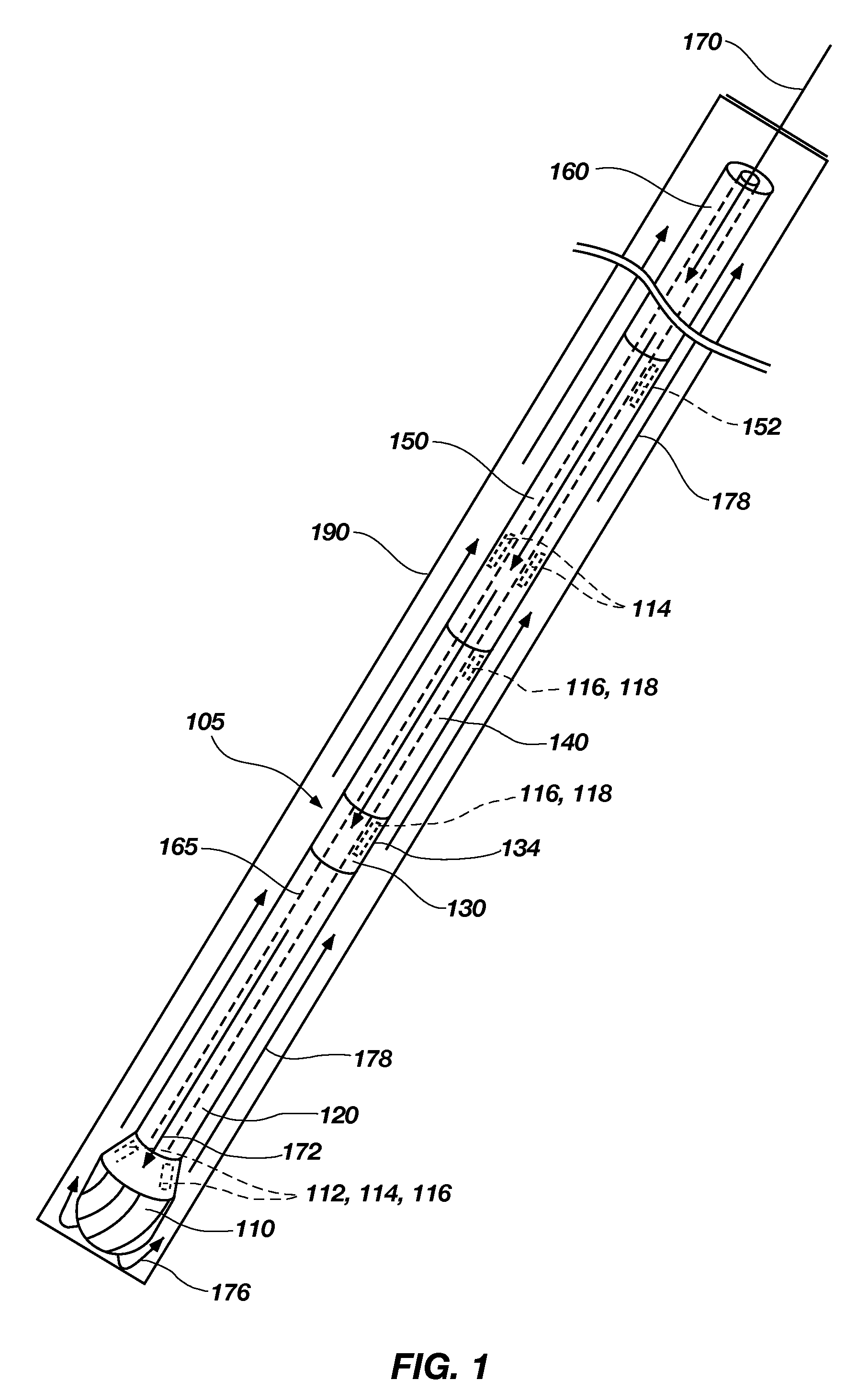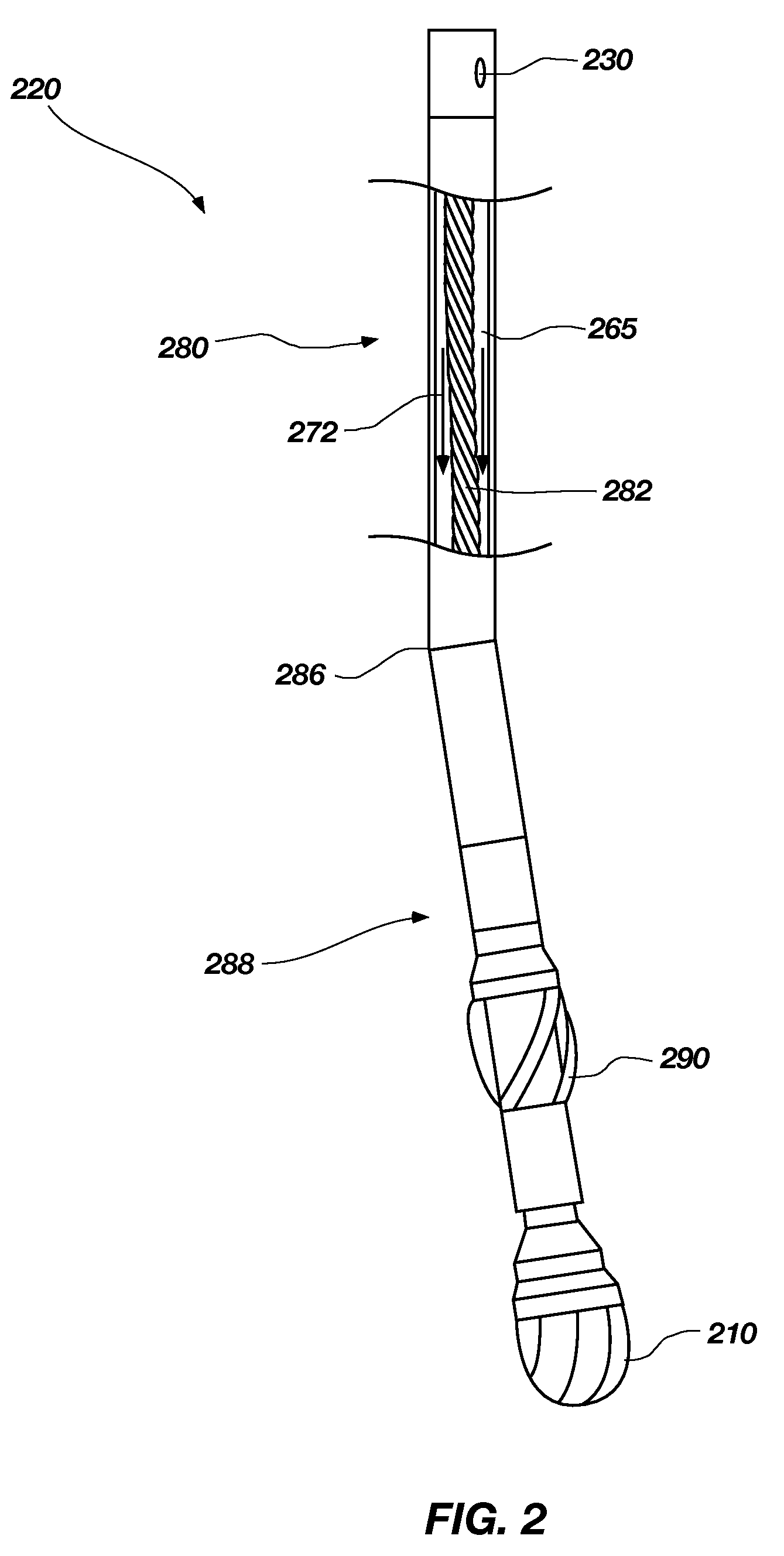Drilling components and systems to dynamically control drilling dysfunctions and methods of drilling a well with same
a technology of drilling components and systems, applied in the direction of wellbore/well accessories, earthwork drilling and mining, flushing, etc., can solve the problems of premature failure of the cutting structure of the bit, the electrical and mechanical components of the downhole tool and collar, and the wear of each of the components of the drill string
- Summary
- Abstract
- Description
- Claims
- Application Information
AI Technical Summary
Benefits of technology
Problems solved by technology
Method used
Image
Examples
example 1
[0065]An embodiment of the invention may be used to optimize the depth to which the cutting elements of the drill bit engage the formation and, hence, optimize the torque and / or the force applied to the drill bit during drilling. In so doing, the life of the drill bit and the drilling tools associated therewith in a BHA may be optimized, i.e., increased. In addition, the rate of penetration (ROP) may be optimized and the cost of drilling the well decreased.
[0066]It is usually desirable to maximize the ROP, at least until the point at which the drill bit or downhole tools wear too quickly and require premature replacement. The ROP often is a function, in part, of the WOB and the rpm of the drill bit and frequently increases as the WOB or the rpm increases. As one with ordinary skill may appreciate, however, the ROP is a complex function with many factors, of which WOB and rpm are only two of the factors over which control may be exerted.
[0067]In the case of roller cone bits, the wear...
example 2
[0082]While the foregoing example provides an example of occurrences in which the invention may prove useful, others may exist. For example, embodiments of the invention may prove useful in eliminating or at least reducing the severity of drilling dysfunctions that may occur during the drilling process. An example of such drilling dysfunctions may be the phenomenon known as stick-slip.
[0083]Stick-slip occurs when a portion of the BHA 105, usually the drill bit 110, stops rotating momentarily while the rest of the drill string 160 and the BHA 105 still rotate from the surface. This may occur because the cutting elements on the drill bit 110 engage the formation too deeply, causing the drill bit 110 to stop rotating and the downhole motor 120 to stall. An indication that this may have occurred is that the pressure of the drilling fluid 170 as measured at the stand pipe at the surface suddenly increases as the power section of the downhole motor 120 stops turning. In addition, sensors ...
PUM
 Login to View More
Login to View More Abstract
Description
Claims
Application Information
 Login to View More
Login to View More - R&D
- Intellectual Property
- Life Sciences
- Materials
- Tech Scout
- Unparalleled Data Quality
- Higher Quality Content
- 60% Fewer Hallucinations
Browse by: Latest US Patents, China's latest patents, Technical Efficacy Thesaurus, Application Domain, Technology Topic, Popular Technical Reports.
© 2025 PatSnap. All rights reserved.Legal|Privacy policy|Modern Slavery Act Transparency Statement|Sitemap|About US| Contact US: help@patsnap.com



